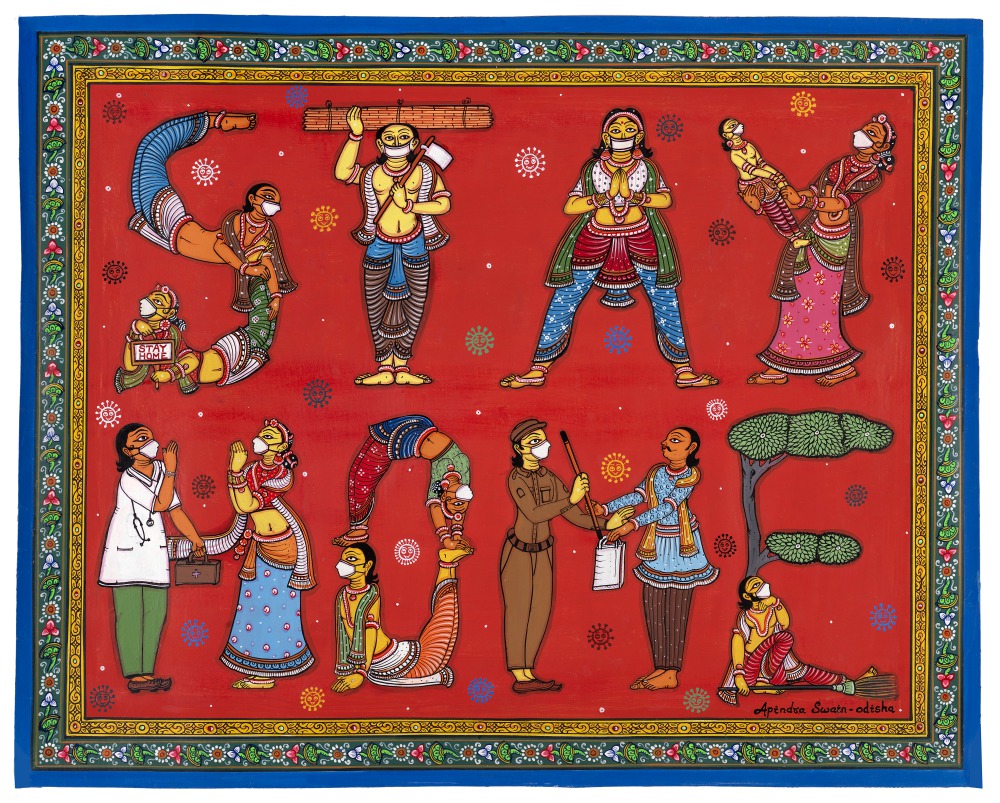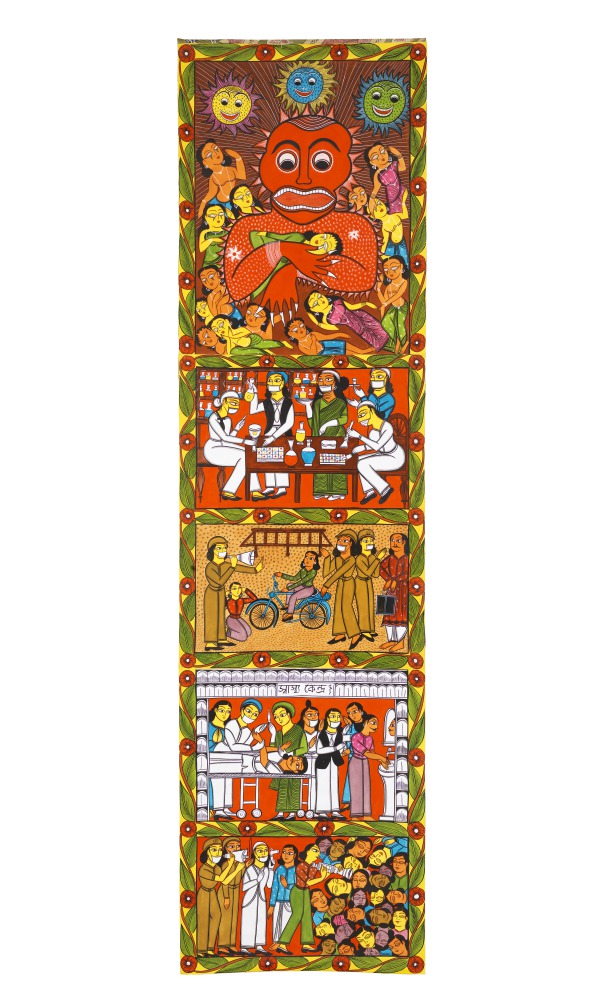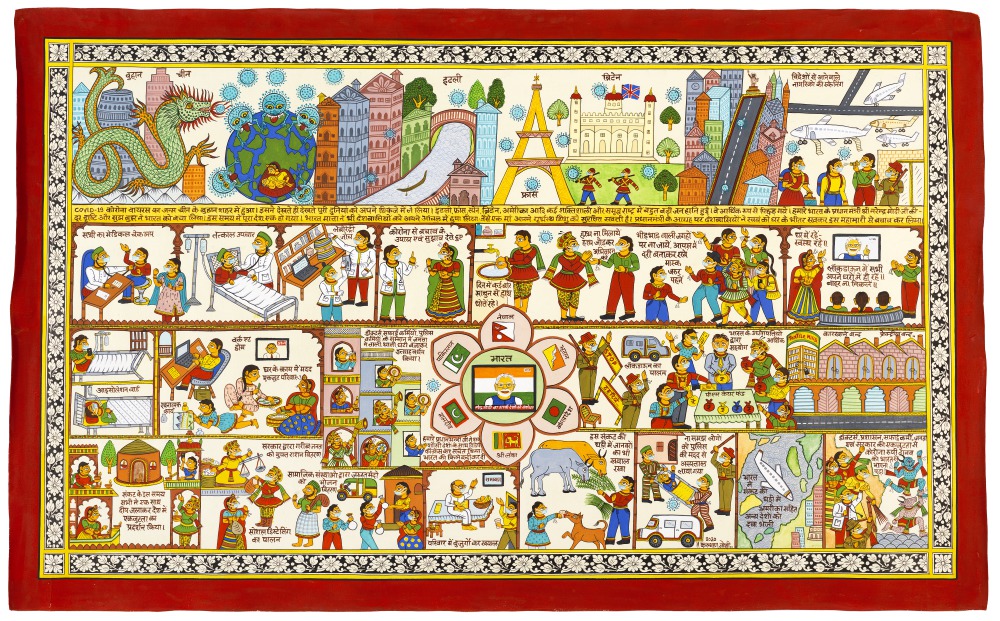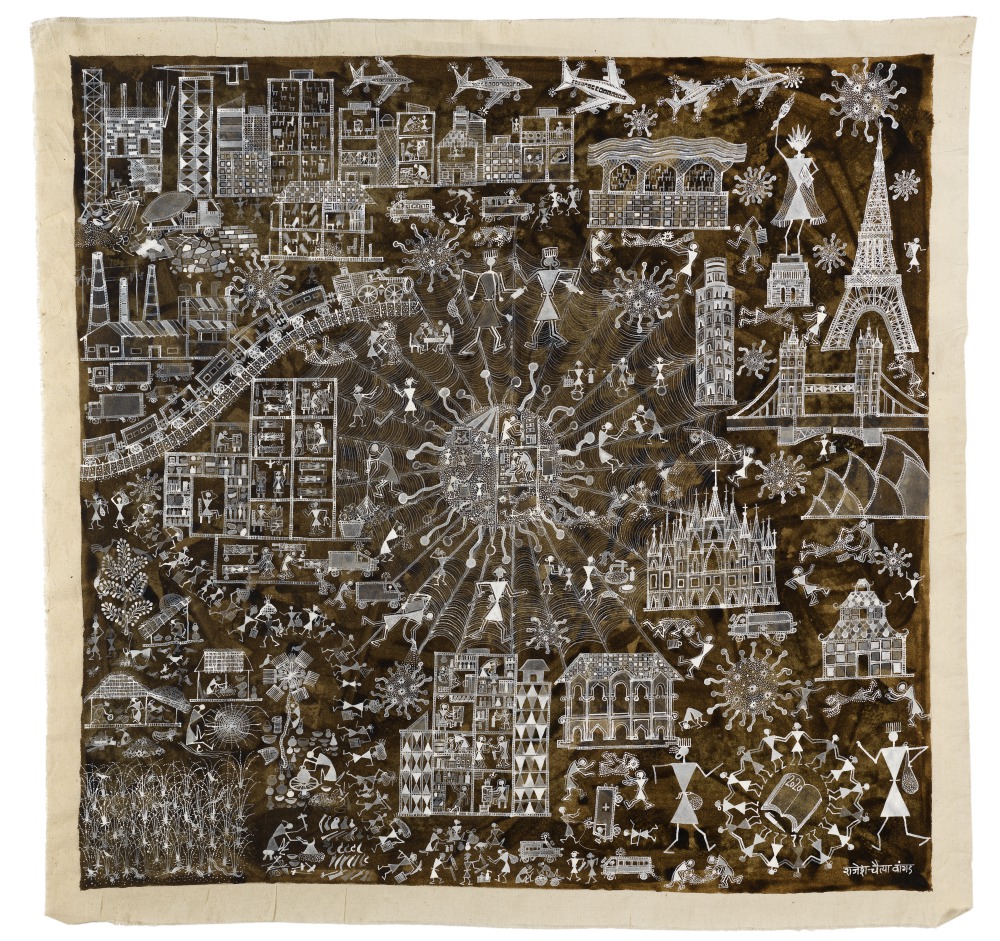Five artworks on the theme of the Covid-19 pandemic by Indian folk artists, acquired by Glasgow Museums in 2020 with a grant of £1,107 from the National Fund for Acquisitions, funded by the Scottish Government.

A multi-disciplinary team from Glasgow Museums, Glasgow City Archives and Glasgow Libraries Special Collections has been working over the last twelve months to document the Covid-19 pandemic, collecting a wide range of objects encompassing social history, contemporary art, transport, world cultures, documentary photography, archives and paper ephemera. Everything acquired will go into Glasgow’s civic collections to represent and help future generations understand this time of crisis. Part of our proposal for contemporary collecting around the Covid-19 pandemic was to look beyond Glasgow at the global response. We were inspired by media coverage of Indian folk artists who were using their art as a means of describing their initial response to the pandemic. In partnership with Delhi-based Minhazz Majumdar, Curatorial and Cultural Advocacy Services, we acquired a capsule collection of Covid-themed Indian folk art as a record of the earliest artistic responses to the global impact of the pandemic and supported folk artists otherwise unable to work. We were fortunate to be able to collect these first responses and Glasgow Museums was the first UK institution to acquire such works.


Throughout India, folk artists have been responding to the Covid-19 crisis in multiple ways, interpreting the pandemic according to their particular culture and tradition. The lockdown and loss of the tourist and pilgrimage markets mean that many are simply struggling to feed their families, but others have used the time, space and their artistic traditions to create awareness about the disease. It was decided to collect Covid-themed examples of high-quality works by known artists from the same traditions represented by those in our existing collection. We have therefore selected an Odisha Pattachitra in the Oriya Pattachitra style, entitled Stay Home by the artist Apindra Swain, a Bengali Patua scroll by Rupsona Chitrakar and her father Bahadur Chitrakar (brother of Gurupada Chitrakar), a Rajasthani Phad painting by Kalyan Joshi and a Kachni style of Madhubani painting from Bihar, probably by the artist Heera Kant. We also commissioned a tribal or Adivasi Warli piece by Rajesh Chaitya Vangad as this iconic tradition is an important omission from our current collection. Vangad’s work has multiple narratives that have been woven together much like the spider’s web depicted here. The prominent story is about the pandemic and its impact on mankind, but within this narrative are woven Warli environmental stories, issues around globalisation and Warli life lessons.


Covid did impact on the logistics of the project in ways we could not always predict. Lockdowns in both India and the UK affected the transportation of the works, our ability to communicate with the artists, the ability of the artists to acquire some of their traditional materials, the physical examination of the works in India and the processing of works in Glasgow. We responded by being as flexible as possible regarding timelines and materials, such as allowing non-traditional mill-made paper and commercial inks and paints, and by communicating entirely via social media. We have all adapted to these new ways of working and in this case the additional effort was worth it. As well as acquiring five new commissioned artworks of national significance for Glasgow Museums’ collections, when taken in conjunction with other historical documentation they will serve as a visual record of a particular cultural perspective during an unprecedented global crisis.
https://www.thehindu.com/entertainment/art/when-indian-folk-art-finds-a-viral-muse/article31707869.ece
https://www.bbc.co.uk/news/world-asia-india-52464028
Patricia Allan
Curator of World Cultures
Glasgow Museums
